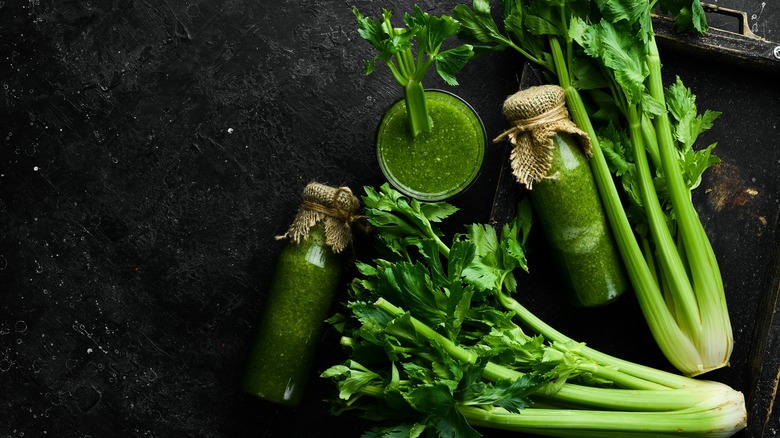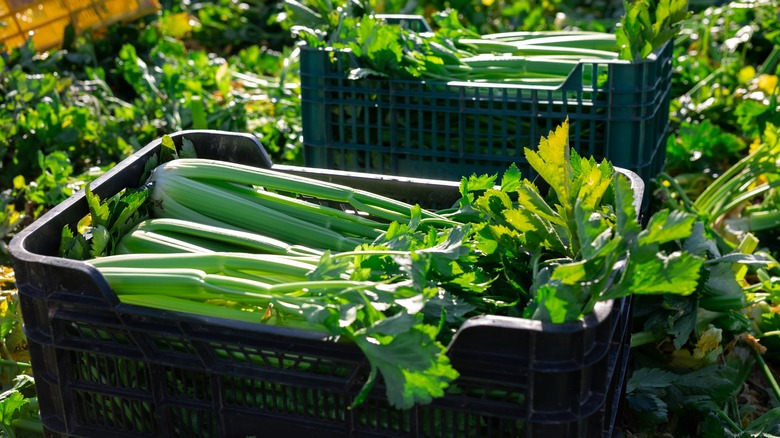How Celery Went From Bitter Herb To Cooking Staple
Whether or not you're a fan of celery, it's hard to deny its versatility. It can be enjoyed raw as a part of a crudité (or veggie platter), as a refreshing counterpart to and essential pairing with buffalo wings, used as the log for ants on a log, and as a garnish to a Bloody Mary. Celery is also a crucial foundational ingredient for a number of recipes — along with onions and carrots, it's one of the three key ingredients in the French mirepoix, an "aromatic flavor base" for sauces, soups, stews, stocks, and other dishes (via MasterClass). Celery also plays a similar role in the Italian cooking base of soffrito and the Holy Trinity in Creole cooking. It also adds a nice crunch to salads, including chicken salad and tuna salad, and lobster rolls.
A plant native to the Mediterranean, celery has been used for thousands of years. In ancient times, it was used for medicinal purposes in China, Egypt, and Rome, and for victory wreaths in Greece, explains NPR. With bitter leaves and largely inedible stalks, the ancestor of the modern celery plant wasn't used much for eating or cooking, according to Epicurious. So how did it become the cooking staple that it is today?
A lot of effort went in to making celery edible and easier to cultivate
Much of the credit is due to European botanists and gardeners. As Epicurious explains, French scientists began cultivating a variety of celery in the 1620s, and by the 1700s, it was being grown in English gardens. Through a combination of practices, like cross-breeding and blanching, which created different varieties that were more solid and had a milder flavor, celery became edible both raw and when cooked. Soon, recipes incorporating celery could be found in Europe and America, including the likes of celery sauce, soups, and as an accompaniment to roasted turkey.
During the Victorian Era, when it was still difficult to cultivate, celery was incredibly fashionable and became a status symbol, with its own vase to showcase it as a centerpiece and a special dish to serve it cooked, notes Taste. A lot of effort went into making it easier to cultivate, and celery eventually fell victim to its own popularity — when it became easy to harvest and accessible to just about anyone, celery became relegated to the relish tray. Today, celery rarely has a starring role in the culinary world, but it sure works hard in its supporting role as a cooking staple.

